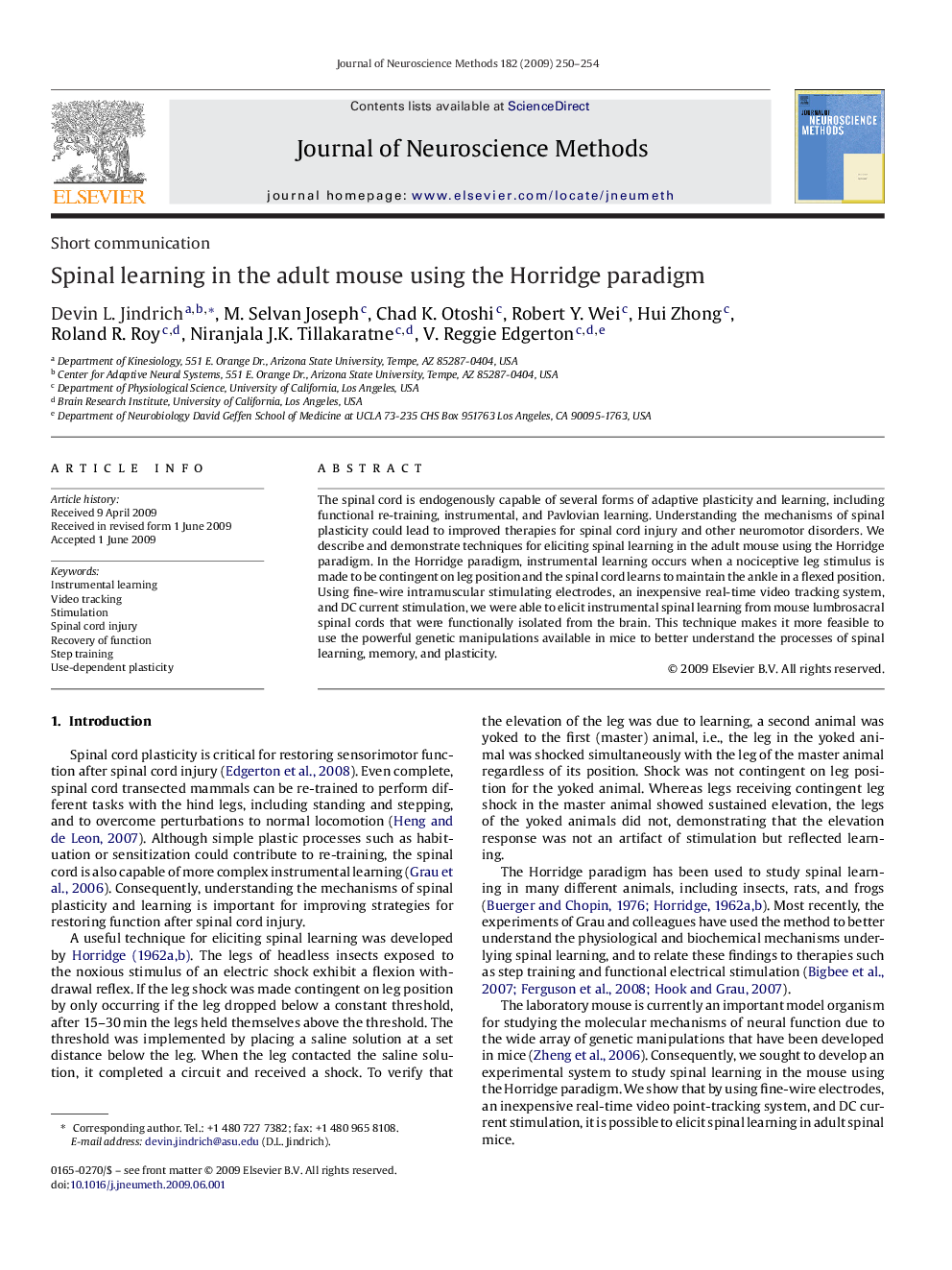| Article ID | Journal | Published Year | Pages | File Type |
|---|---|---|---|---|
| 4335787 | Journal of Neuroscience Methods | 2009 | 5 Pages |
Abstract
The spinal cord is endogenously capable of several forms of adaptive plasticity and learning, including functional re-training, instrumental, and Pavlovian learning. Understanding the mechanisms of spinal plasticity could lead to improved therapies for spinal cord injury and other neuromotor disorders. We describe and demonstrate techniques for eliciting spinal learning in the adult mouse using the Horridge paradigm. In the Horridge paradigm, instrumental learning occurs when a nociceptive leg stimulus is made to be contingent on leg position and the spinal cord learns to maintain the ankle in a flexed position. Using fine-wire intramuscular stimulating electrodes, an inexpensive real-time video tracking system, and DC current stimulation, we were able to elicit instrumental spinal learning from mouse lumbrosacral spinal cords that were functionally isolated from the brain. This technique makes it more feasible to use the powerful genetic manipulations available in mice to better understand the processes of spinal learning, memory, and plasticity.
Keywords
Related Topics
Life Sciences
Neuroscience
Neuroscience (General)
Authors
Devin L. Jindrich, M. Selvan Joseph, Chad K. Otoshi, Robert Y. Wei, Hui Zhong, Roland R. Roy, Niranjala J.K. Tillakaratne, V. Reggie Edgerton,
